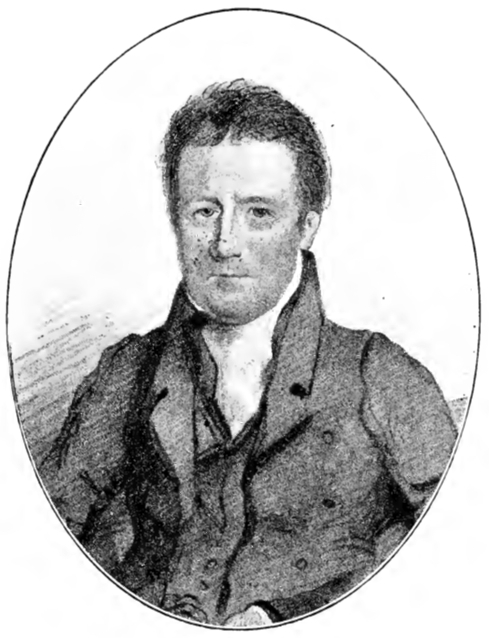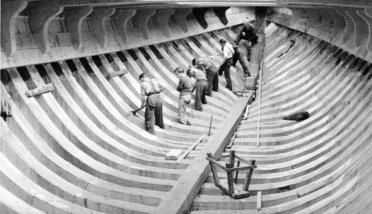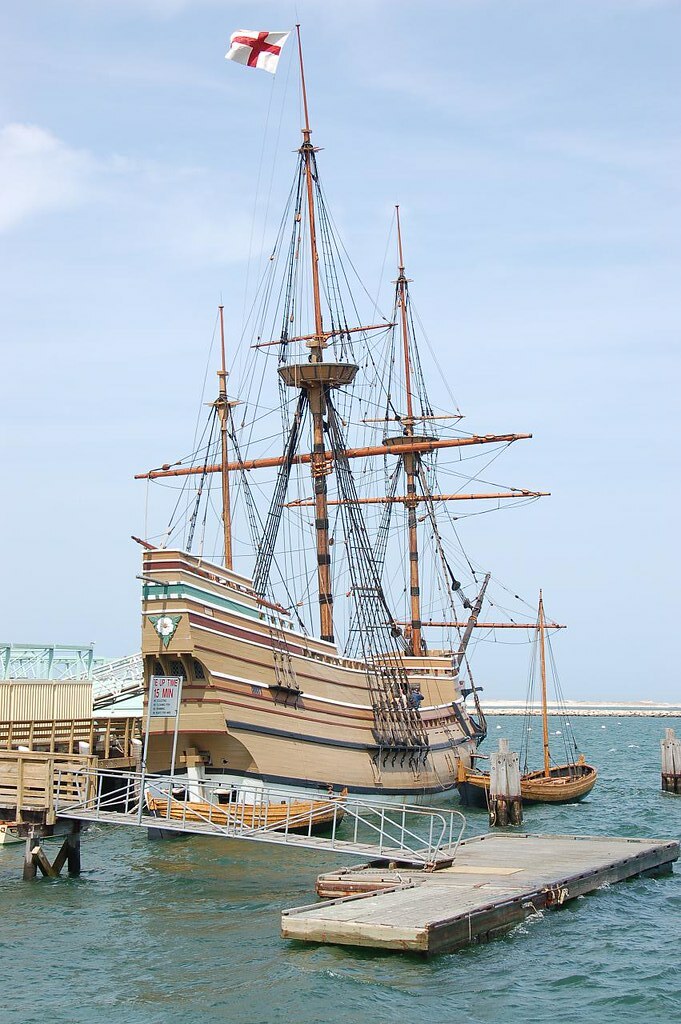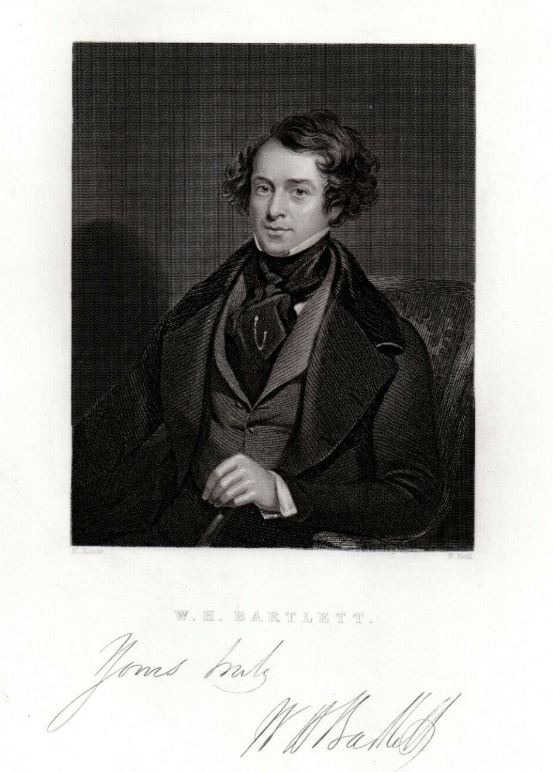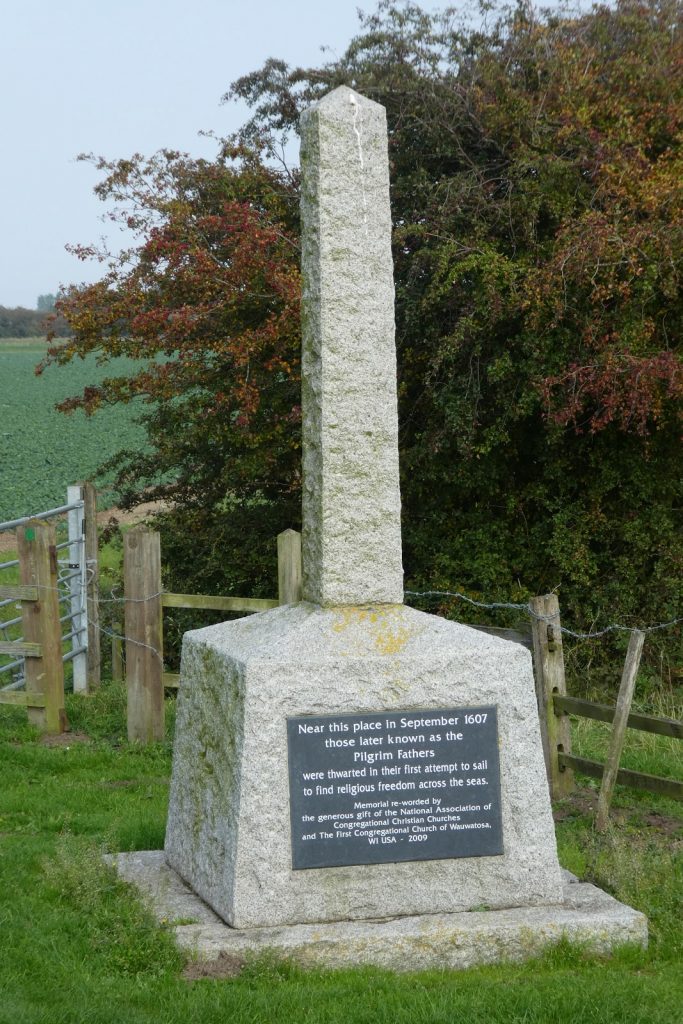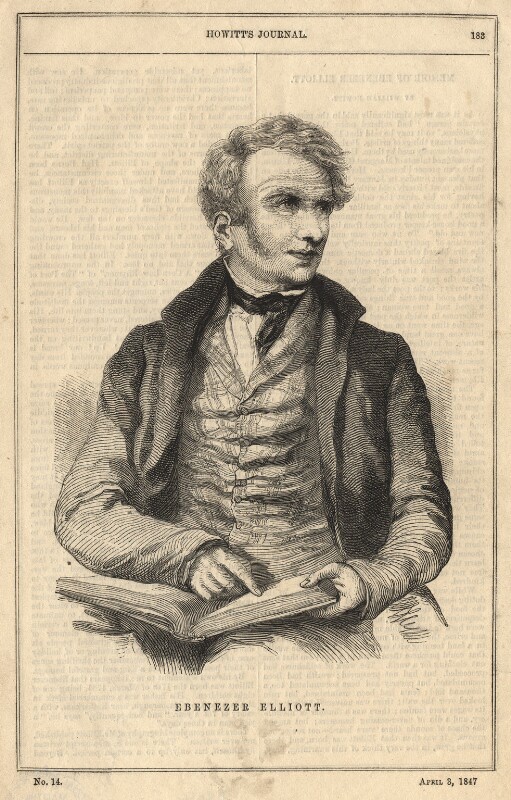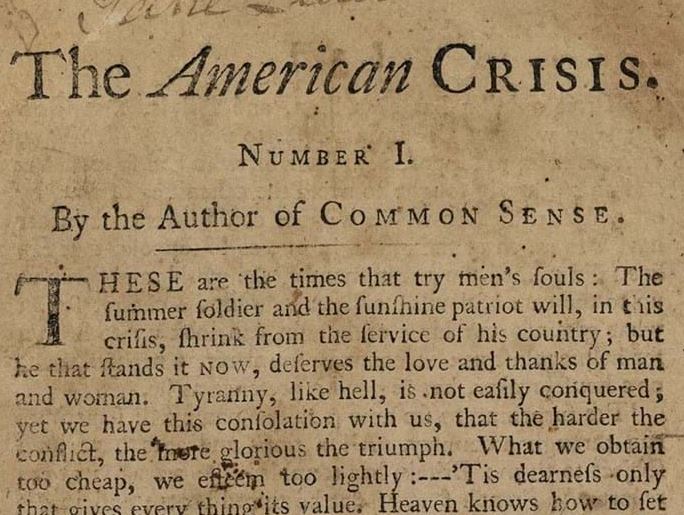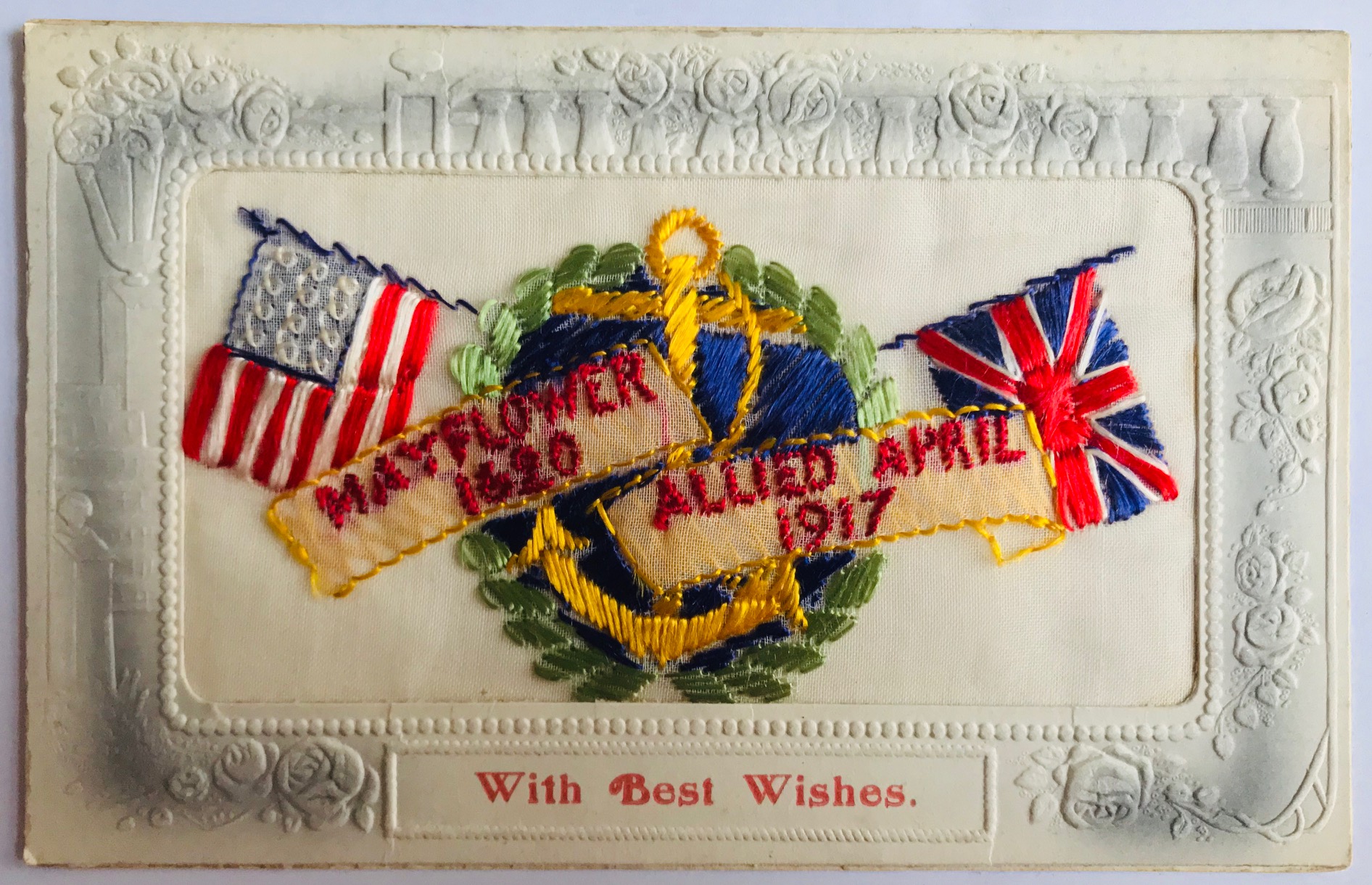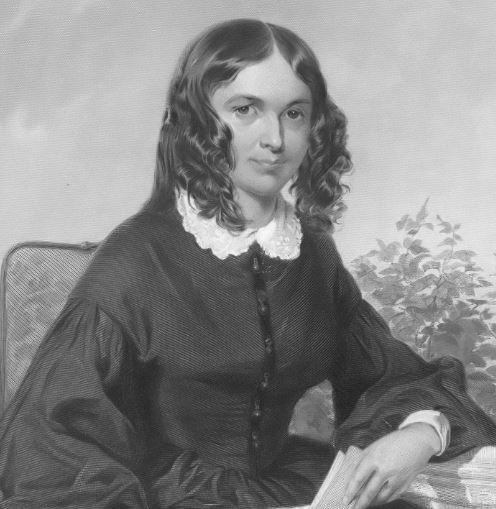In other blogs we have written about how the Pilgrims became the muse of Romantic artists and authors in the early nineteenth century, such as the poets Felicia Hemans and William Wordsworth. Yet many of the details of the actual history of the former lives of the Separatists – their homes and places of worship in the Old England – remained vague or unknown to the early Victorians. In this post, we investigate how some of the gaps in knowledge were filled in, and the vital role played by a now mostly forgotten English antiquarian: Joseph Hunter.
Pilgrim Fathers
The Mayflower II – Part 3: Solving Problems and Sailing the Mayflower II
*Guest post by Randal Charlton, author of The Wicked Pilgrim*
Warwick Charlton had successfully got his project to build and sail the Mayflower II off the ground. But, as the date of the launch grew ever nearer, new problems began to arise.
The Mayflower II – Part 2: Making a Dream a Reality
*Guest post by Randal Charlton, author of The Wicked Pilgrim*
So now to the next question: how did Warwick Charlton build and sail the Mayflower II? Particularly since he was a man of very limited means, living paycheck to paycheck in an era of severe postwar austerity.
First off, he had a wonderful network of talented and powerful people that he had in part inherited from his well-connected parents as well the men he had bonded with during the war and the immediate postwar period. Some examples; Hugh Cudlipp later Lord Cudlipp head of the influential Mirror media group, Sir Francis de Guingand General Montgomery’s chief of staff and friend of president Eisenhower and Randolph Churchill the son of Britain’s famed war time leader Winston Churchill.
The Mayflower II – Part 1: The Englishman who gave America a piece of its history
*Guest post by Randal Charlton, author of The Wicked Pilgrim*
The Church of the Pilgrim Fathers, Southwark
*Guest post by Professor Erik Goldstein, Boston University*
One of the earliest commemorations of the Pilgrims in Britain, and of the voyage of the Mayflower, was the Pilgrim Fathers’ Memorial Church in Southwark. Planning for the church building commenced in 1850, a cornerstone was laid in 1856, and completion came in 1864, only to be destroyed by aerial bombardment in 1941, followed by a short postwar existence in a new home.
Pilgrim Pageants in the Twentieth Century
Historical pageants were, at one time, the most popular form of engagement with the past in Britain. Bursting onto the social stage in 1905, they took place across the country and the Empire, from the smallest villages to the largest cities. Amateur casts up to 10,000 people – and that is not a typo – were brought together by ingenious ‘pageant-masters’ to perform their local history, and audiences of up to 100,000 packed themselves into outdoor arenas and fields to spectate. In the early days of the ‘pageantitis’ pandemic, the storyline of pageants usually began in the dim and distant past of ancient Celtic Britain, before the arrival of the Romans heralded the beginnings of civilisation. Following episodes cycled through the conquering Saxons and Normans, then the different monarchical reigns from Tudor to Elizabethan. Usually ending with good old Queen Bess, these romantic re-enactments told a story of local and national progress: the setting of historical foundations for great power in the present. Continue reading
Mayflower Travel Writing in Britain
The Mayflower Pilgrims – A Voyage Out of Context
*Guest post by Adrian Gray, historical adviser to Bassetlaw Christian Heritage and director of Pilgrims & Prophets Christian Heritage Tours*
Growing up in Lincolnshire and now living just on the Nottinghamshire side of the border, I’ve long been aware of the ‘Mayflower’ story but have also noticed that its local impact has been small. In the Scrooby/Gainsborough area there has never been any statue and all the memorial plaques were, until recently, mainly the work of American Congregationalists. On the coast, 45 miles away, are two memorials also funded by Congregationalists and neither in the correct place. ‘Locals’ seem to have seen it as a story about someone else.
With Mayflower 400, there was some growing local interest – partly because many of us have been active in re-shaping the story so that it has clear local relevance. The focus on William Brewster and William Bradford, people who were not that important while they were here, has been at the expense of understanding local context; nor has there been much awareness of what happened here after ‘they’ left.
Radicalism, the Pilgrim Fathers and Ebenezer Elliott: The ‘Corn Law Rhymer’
The American Crisis and Radical Pilgrims
H.T. Dickinson comments that ‘The American Revolution was the first great modern revolution and it has arguably been the most permanent, successful and widely admired’.[1] The results of this major event led to ‘the oldest surviving written constitution in the world’, and ‘a remarkably successful liberal regime’ that contrasted with the established political systems of eighteenth-century Europe.[2] Unsurprisingly such an influential event has received attention from generations of American scholars and historians. However, not as many historians have explored the British perspective on what was memorably termed by Thomas Paine ‘The American Crisis’. Britain was far from united in supporting the war with the American colonies – and indeed, for some political commentators, the story of the Mayflower provided a historical justification for American secession.
1917 Silk Postcard
This embroidered silk postcard commemorated the official entry of the USA into the First World War. It was made in England by Birn Brothers, Ltd – a large printing house that manufactured both cheap pictorial books and postcards.[1] On the front of the postcard, the Stars and Stripes and the Union Jack hang out from behind a laurel wreath and an anchor: symbols of nationhood, victory and naval power intertwined. Joining the composition together are two pennants adorned with ‘Mayflower 1620’ and ‘Allied April 1917’. Mayflower-mania had been reaching fever pitch on both sides of the Atlantic in the final years of the 19th century and especially in the lead-up to the First World War. New editions of important fiction and non-fiction works about the Pilgrim Fathers were published, monuments erected in towns and cities that linked themselves to the story, and committees formed to plan largescale celebrations for the 300th anniversary in 1920. Around the same time, a rapprochement between Britain and the USA was taking place after a long period of animosity following the American Revolution. To achieve the sense of a new alliance, diplomats – from the highest echelons of government to the everyday Anglo-American enthusiast – actually looked back to history. The tale of the Pilgrim Fathers was ripe for using as a tool to create a shared identity. ‘The return of the Mayflower’ had already become a familiar expression in previous decades, referring to the 1621 return voyage on which no Pilgrims had chosen to journey. But during the War the phrase took on a new meaning: the return in the present of now-American Pilgrims to save their mother country. Rudyard Kipling popularised this idea in 1917 when he described how the world had seen ‘The second sailing of the Mayflower’ and tentatively asked ‘What shall grow out of her return voyage our grandchildren may, perhaps, comprehend.’[2] In a bright and colourful way, this postcard captured that spirit.
[1] Metro Postcard – http://www.metropostcard.com/publishersb1.html
[2] Rudyard Kipling, ‘The second sailing of the “Mayflower”’, Daily Telegraph (August 17th 1918).
The Runaway Slave at Pilgrim’s Point
Many depictions of the ‘Pilgrim Fathers’ in nineteenth-century British literature offer a positive, idealised, even elegiac portrayal of the settlement of New Plymouth. After all, according to the myth popularised by Felicia Hemans, these were the brave men and women who laid the foundation of a great nation. However, the mythology of the Mayflower was also put to less celebratory uses. Perhaps the most well-known example is Elizabeth Barrett Browning’s ‘The Runaway Slave at Pilgrim’s Point’ (1848); a controversial mid-century poem that grapples with issues of race, slavery, and injustice from an explicitly abolitionist perspective. Originally intended for publication in the 1848 edition of The Liberty Bell, an antislavery annual based in Boston, Browning – born in County Durham – feared the work was ‘too ferocious, perhaps, for the Americans to publish’. [1]

